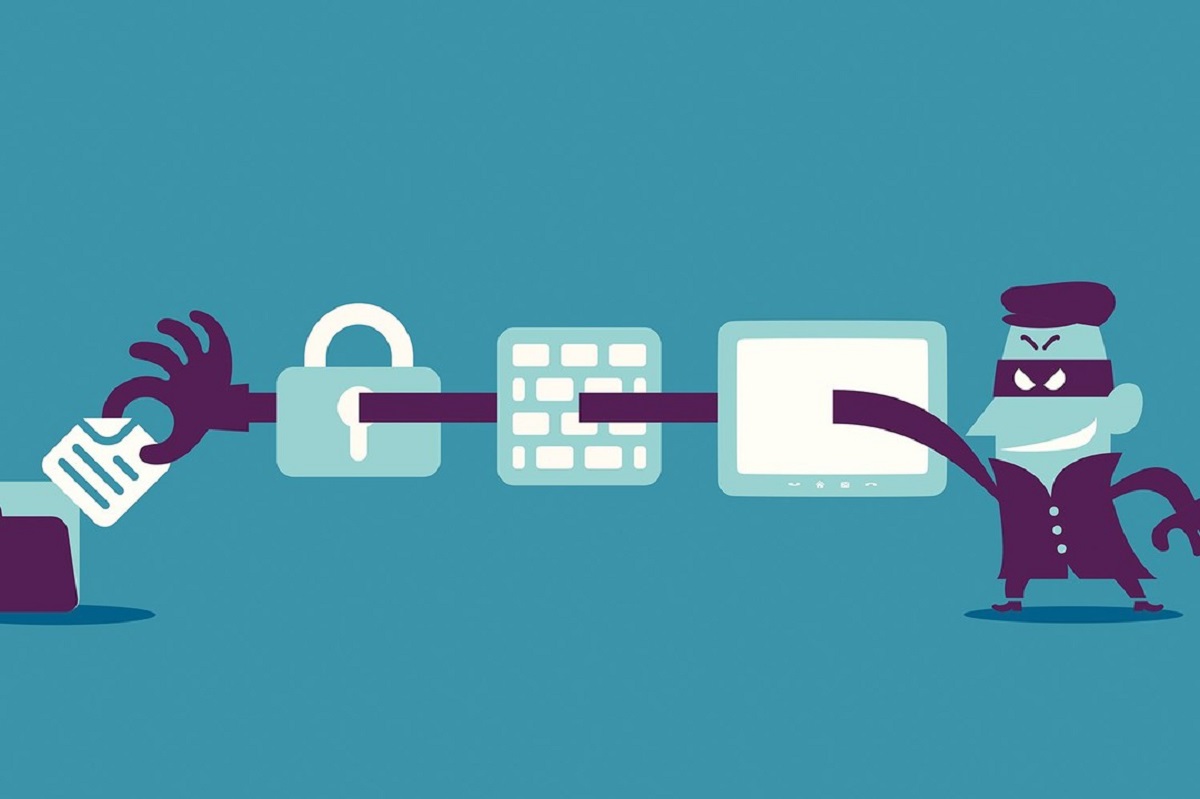Introduction
Cybersecurity has become an increasingly critical concern for businesses and individuals as the digital landscape continues to expand. With the rise in cyber threats and attacks, organizations are realizing the need for comprehensive cybersecurity measures to safeguard their sensitive data and systems. However, implementing robust cybersecurity practices in reality can be a complex and challenging endeavor.
The complexity of cybersecurity implementation stems from various factors, including the ever-evolving cyber threat landscape, the diverse range of attack vectors, the need to identify and protect vulnerabilities, as well as the challenges associated with patch management, encryption, network security, user access management, and incident response. Moreover, compliance with regulatory requirements adds an additional layer of complexity.
This article explores why comprehensive cybersecurity can be very complex to implement in reality. By understanding the various challenges and considerations involved, organizations can better prepare and strategize their cybersecurity efforts to minimize the risk of cyber attacks and data breaches.
Throughout this article, we will delve into the intricacies of cybersecurity implementation, the impact of complexity on organizational security posture, and effective strategies to overcome these challenges.
Understanding the Complexity of Cybersecurity
Cybersecurity is a complex field that involves a multitude of technical, procedural, and human factors. To fully grasp the complexity of cybersecurity implementation, it is essential to consider the dynamic nature of the digital landscape and the continuously evolving cyber threat landscape.
One of the primary reasons why cybersecurity is complex is the ever-evolving nature of cyber threats. Hackers and cybercriminals are constantly developing new techniques and tactics to breach security defenses and exploit vulnerabilities. This requires organizations to stay proactive and adapt their security measures to keep up with the latest threats.
Another aspect contributing to the complexity of cybersecurity is the diverse range of attack vectors. Cyber attackers can exploit vulnerabilities in various ways, including malware, phishing, social engineering, ransomware, and distributed denial-of-service (DDoS) attacks. Each attack vector requires a different approach and countermeasures, making it challenging for organizations to cover all bases.
Identifying and protecting vulnerabilities is another crucial aspect of cybersecurity implementation. Vulnerabilities can exist in software, hardware, network infrastructure, or even human behavior. Conducting comprehensive risk assessments and vulnerability scans to identify these weaknesses is essential but can be time-consuming and resource-intensive.
Additionally, organizations face challenges in managing patch updates and ensuring timely deployment. Keeping software and systems up to date with the latest security patches is crucial in mitigating vulnerabilities. However, the larger the organization, the more complex this process becomes, as it involves coordinating with multiple vendors, testing patches for compatibility, and deploying them across various systems without disrupting business operations.
Encryption and data protection are also integral to cybersecurity but pose their own set of challenges. Implementing robust encryption protocols to protect sensitive data requires careful planning and consideration of factors such as key management, encryption algorithms, and securing data in transit and at rest.
Furthermore, network security and firewalls play a vital role in safeguarding against unauthorized access and malicious activities. However, configuring and managing network security devices, ensuring proper segmentation, and staying ahead of emerging threats can be complex tasks that require specialized knowledge and expertise.
Managing user access and privileges is another critical aspect of cybersecurity. Organizations need to implement strong authentication mechanisms and access controls to ensure that only authorized individuals have the necessary access to sensitive data and systems. However, striking the right balance between security and usability can be a delicate challenge.
Moreover, cybersecurity is not just a technological issue; it also involves the human element. Establishing a security-aware culture and providing regular training and awareness programs are essential to combat social engineering attacks such as phishing and email spoofing. However, changing employee behavior and ensuring consistent adherence to security protocols can be a significant challenge for organizations.
In the following sections, we will explore each of these complex cybersecurity aspects in more detail and discuss effective strategies for overcoming the associated challenges.
The Evolving Cyber Threat Landscape
The cybersecurity landscape is in a constant state of evolution, with cyber threats evolving at an alarming rate. As technology advances and new vulnerabilities are discovered, cybercriminals continue to develop sophisticated strategies to exploit these weaknesses. This ever-changing threat landscape poses significant challenges for organizations striving to protect their systems and data.
One of the key factors contributing to the complexity of cybersecurity implementation is the wide range of potential threats organizations face. From traditional threats like viruses and malware to more advanced tactics such as ransomware, phishing, and zero-day exploits, the diversity of cyber threats is vast. Each new threat requires organizations to adapt their defenses and stay one step ahead.
Not only do cyber threats vary in their methods, but they also differ in their motives. Some attacks are financially motivated, seeking to steal sensitive information or extort money from victims. Others are ideologically driven, aiming to disrupt systems or spread propaganda. The motivations of attackers can greatly influence their techniques and targets, adding another layer of complexity to cybersecurity efforts.
Furthermore, the increasing sophistication of cyber threats is a significant challenge for organizations. Advanced Persistent Threats (APTs) are becoming increasingly common, with skilled attackers using sophisticated techniques to breach systems and remain undetected for extended periods. These attackers often target specific organizations or sectors, requiring robust defensive measures to detect and mitigate their activities.
The emergence of the Internet of Things (IoT) has further amplified the complexity of the threat landscape. IoT devices, such as smart home devices, wearables, and industrial control systems, are becoming common targets for cybercriminals. The interconnected nature of these devices introduces vulnerabilities that can be exploited to launch widespread attacks or gain unauthorized access to critical systems.
Another significant challenge is the use of machine learning and artificial intelligence (AI) by cybercriminals. These technologies enable attackers to automate and enhance their attack capabilities, making it even more difficult for organizations to identify and defend against threats. Adversarial machine learning, where attackers manipulate AI models, poses a new set of challenges as organizations need to ensure the integrity of their defense mechanisms.
In response to the evolving threat landscape, organizations must adopt a proactive approach to cybersecurity. This includes continuously monitoring and analyzing emerging threats, sharing information and collaborating with industry peers, and investing in advanced threat detection and response capabilities.
In the next section, we will explore the diverse range of cyberattack vectors that organizations need to contend with, adding another layer of complexity to their cybersecurity implementation.
Diverse Range of Cyberattack Vectors
The complexity of cybersecurity implementation is further compounded by the diverse range of cyberattack vectors that organizations must defend against. Attackers have numerous avenues through which they can infiltrate systems, steal data, or disrupt operations. Understanding and mitigating these attack vectors is essential for effective cybersecurity.
One common attack vector is malware, which includes various types such as viruses, worms, and trojans. Malware can be spread through infected email attachments, malicious downloads, or compromised websites. Once installed on a system, malware can cause significant damage, including data breaches, system crashes, and unauthorized access.
Phishing attacks, another prevalent attack vector, target individuals rather than systems. Attackers impersonate trustworthy sources to trick individuals into revealing sensitive information, such as login credentials or credit card details. Phishing attacks are often carried out via email, SMS, or social media platforms, making them difficult to detect and protect against.
Ransomware attacks have seen a rapid rise in recent years. This type of attack involves encrypting a victim’s files or systems and demanding a ransom for their release. Ransomware attacks can cripple organizations and cause substantial financial and reputational damage.
Zero-day exploits pose another significant challenge. Zero-day vulnerabilities are software vulnerabilities that are unknown to the developers and therefore have no patch available. Attackers exploit these vulnerabilities before developers can fix them, leaving organizations vulnerable to attacks until a solution is developed.
Distributed Denial of Service (DDoS) attacks are a threat to businesses and individuals alike. These attacks flood a target’s server or network with a massive amount of traffic, rendering it inaccessible to legitimate users. DDoS attacks can disrupt services, cause financial losses, and damage an organization’s reputation.
Other attack vectors include SQL injection, where attackers exploit vulnerabilities in a website’s database to extract or manipulate data, and man-in-the-middle attacks, where attackers intercept and alter data transmissions between two parties.
These are just a few examples of the many attack vectors that organizations need to defend against. Each attack vector requires specific countermeasures and defenses. Organizations must employ a multi-layered approach to cybersecurity, combining technical controls, user education, and ongoing monitoring to mitigate the risks associated with each attack vector.
In the following sections, we will explore the importance of identifying and protecting vulnerabilities, the challenges of patch management, and the role of encryption and data protection in comprehensive cybersecurity implementation.
Importance of Identifying and Protecting Vulnerabilities
Identifying and protecting vulnerabilities is a crucial aspect of cybersecurity implementation. A vulnerability is a weakness in a system or network that can be exploited by attackers to gain unauthorized access, compromise data, or disrupt operations. Failing to identify and protect against vulnerabilities can leave organizations susceptible to cyberattacks and data breaches.
One of the main reasons why identifying vulnerabilities is important is that attackers actively search for and exploit these weaknesses. Cybercriminals use various methods, such as automated scanning tools and manual assessments, to identify vulnerable systems and networks. By proactively identifying and patching vulnerabilities, organizations can significantly reduce the risk of being targeted and compromised.
Vulnerability management involves conducting regular risk assessments and security audits to identify weaknesses in systems, applications, network infrastructure, or user practices. This process often includes vulnerability scanning and penetration testing to identify and prioritize vulnerabilities based on their likelihood of exploitation and potential impact.
Protecting vulnerabilities primarily involves implementing appropriate security controls and applying patches and updates in a timely manner. Security controls can include implementing access controls, firewall rules, and intrusion detection systems to mitigate the risk associated with known vulnerabilities. Additionally, adopting a proactive approach to patch management is essential to close security gaps and protect against known exploits.
However, protecting vulnerabilities can be a challenging task. In large organizations with complex IT infrastructures, it can be challenging to keep track of all systems and applications and ensure that patches and updates are installed promptly. Additionally, organizations must balance the need for security with the need to maintain business continuity, as applying patches and updates can sometimes disrupt critical processes.
Another challenge is the existence of legacy systems and applications that may no longer receive updates or vendor support. These systems can be more vulnerable to attacks, as new vulnerabilities are discovered and patched in newer versions of software or hardware.
An effective vulnerability management program should involve a combination of automated vulnerability scanning tools, manual assessments, and continuous monitoring. Organizations should also prioritize vulnerabilities based on their severity and impact to allocate resources effectively.
Furthermore, organizations should establish processes for timely patch management and vulnerability remediation. This includes testing patches in a controlled environment before deploying them, ensuring compatibility with existing systems, and having procedures in place to address any adverse effects resulting from patch deployment.
By identifying and protecting vulnerabilities, organizations can significantly enhance their cybersecurity posture. Regular vulnerability assessments and timely patching of known vulnerabilities are fundamental practices that can help mitigate the risk of cyberattacks, protect sensitive data, and ensure the continuity of business operations.
In the next sections, we will explore the challenges associated with patch management, the role of encryption and data protection, and other key aspects of comprehensive cybersecurity implementation.
Patch Management Challenges
Patch management is a critical aspect of maintaining a secure and resilient IT infrastructure. It involves regularly applying patches and updates to software, operating systems, and applications to address known vulnerabilities and ensure system integrity. However, patch management poses several challenges that organizations must overcome to effectively protect their systems and stay ahead of emerging threats.
One of the primary challenges is the sheer volume of patches that organizations need to handle. Software vendors regularly release patches to address security vulnerabilities, improve functionality, and fix bugs. For large enterprises with extensive IT environments, managing and deploying patches can become overwhelming, requiring careful coordination and prioritization.
Another challenge is the diverse range of software and systems that organizations use. From operating systems to third-party applications, each software component requires regular patching. Coordinating with multiple vendors and ensuring compatibility across different systems can be complex, especially when organizations have a mix of on-premises and cloud-based systems.
Furthermore, organizations must carefully balance the need for security with the need for business continuity. Some patches may require system restarts or temporary disruptions to services, which can impact critical business operations. Organizations need to carefully plan and schedule patch deployments to minimize potential disruptions while maximizing system security.
Timeliness is another crucial aspect of patch management. Attackers are quick to exploit known vulnerabilities, so organizations must apply patches as soon as they are released to minimize the window of opportunity for exploitation. However, the patch management process, including testing and deployment, can take time, especially in complex environments. This time gap between patch availability and deployment can leave systems exposed to potential attacks.
Legacy systems pose another challenge in patch management. Many organizations still rely on older systems or software versions that may no longer receive vendor support or regular updates. This leaves these systems vulnerable to known exploits and limits the effectiveness of patch management efforts. Organizations must develop strategies to address the security risks posed by legacy systems, such as segmenting them from the rest of the network or implementing compensating controls.
Effective patch management also requires comprehensive visibility into the IT environment. Organizations need to have accurate and up-to-date inventories of systems, applications, and their versions to ensure that patches are deployed to all relevant components. Lack of visibility can result in gaps in the patch management process, leaving systems vulnerable to exploits.
To overcome these challenges, organizations should establish a structured patch management process that includes regular vulnerability assessments, patch testing in controlled environments, and prioritization based on risk levels and criticality. Automating patch management tasks, such as scanning for vulnerabilities and deploying patches, can also help streamline the process and ensure timely and consistent patching.
Effective communication and collaboration between IT teams, vendors, and stakeholders are vital for successful patch management. This ensures that relevant information about patches, vulnerabilities, and potential impacts is shared effectively, and patch deployment activities are coordinated efficiently.
By overcoming patch management challenges, organizations can significantly enhance their security posture by reducing the attack surface and mitigating the risks associated with known vulnerabilities. Regular and timely application of patches helps close security gaps and protect against potential exploits, strengthening the overall resilience of the IT infrastructure.
In the next sections, we will explore the role of encryption and data protection, network security, and other key aspects of comprehensive cybersecurity implementation.
Encryption and Data Protection
Encryption and data protection are essential components of comprehensive cybersecurity implementation. In an increasingly digital world where sensitive information is constantly transmitted and stored, organizations must prioritize protecting data from unauthorized access and ensure its confidentiality and integrity.
Encryption plays a crucial role in data protection. It involves transforming data into an unreadable format using encryption algorithms, making it unintelligible to unauthorized individuals. Encryption provides an additional layer of security, even if data falls into the wrong hands.
There are two primary types of encryption: symmetric encryption and asymmetric encryption. Symmetric encryption uses a single key to both encrypt and decrypt data. Asymmetric encryption, also known as public-key encryption, uses a pair of keys – a public key for encryption and a private key for decryption.
Implementing robust encryption protocols is essential for safeguarding sensitive data, especially when it is transmitted over networks or stored in databases, cloud environments, or portable devices. Encryption protects data during transit, such as when it is transmitted over the internet, and at rest, when it is stored in storage devices or servers.
Encryption helps mitigate the impact of potential data breaches. If an attacker gains access to encrypted data without the decryption key, the data remains unreadable and unusable. This is particularly valuable when sensitive information, such as personal identifying information or financial data, is being transmitted or stored.
However, encryption itself is not sufficient. Organizations need to carefully manage encryption keys, which are the secret codes used to encrypt and decrypt data. Proper key management includes safely storing and protecting encryption keys, rotating keys periodically, and ensuring access to keys is only granted to authorized individuals.
Data protection goes beyond encryption. It involves implementing access controls and permissions to restrict access to sensitive data only to authorized individuals or roles. Organizations need to establish robust user authentication mechanisms, such as strong passwords, multi-factor authentication, or biometrics, to protect against unauthorized access.
Additionally, organizations should adopt data loss prevention (DLP) solutions to monitor and prevent the unauthorized transfer or disclosure of sensitive data. DLP technologies help identify and block the transmission of sensitive information through various channels, such as email, instant messaging, or web uploads, to prevent data breaches.
Data protection also encompasses data backup and recovery processes. Regularly backing up data ensures that if data is compromised or lost, it can be restored from a backup source. Backup encryption adds an extra layer of security to protect the integrity and confidentiality of the backup data.
Compliance with data protection regulations, such as the General Data Protection Regulation (GDPR) or the Health Insurance Portability and Accountability Act (HIPAA), is also crucial. Organizations must ensure that their data protection practices align with the relevant regulations and standards to avoid legal or financial consequences.
By prioritizing encryption and data protection, organizations can minimize the risk of data breaches, protect sensitive information, and maintain customer trust. Implementing encryption, proper key management, access controls, and data loss prevention measures form a robust defense against unauthorized access or disclosure of sensitive data.
In the next sections, we will explore other key aspects of comprehensive cybersecurity implementation, including network security, user access management, and security awareness training.
Network Security and Firewalls
Network security is a critical component of comprehensive cybersecurity implementation. It involves protecting the confidentiality, integrity, and availability of network resources, data, and communications. Network security measures aim to prevent unauthorized access, detect and mitigate threats, and ensure the secure transmission of data over networks.
One of the key elements of network security is the use of firewalls. Firewalls act as a barrier between an organization’s internal network and external networks, such as the internet. They analyze incoming and outgoing network traffic based on predefined rules and policies, allowing or blocking traffic based on its source, destination, and other parameters.
Firewalls are essential for defending against unauthorized access attempts and protecting network resources from malicious activities. They help prevent external threats, such as hackers or malware, from compromising the internal network and systems.
Firewalls can be implemented at different levels of the network infrastructure, such as the network perimeter, individual devices, or virtual private networks (VPNs). By strategically placing firewalls and configuring them to enforce strict access control policies, organizations can significantly reduce the attack surface and prevent unauthorized access.
In addition to firewalls, organizations should also employ other network security measures, such as Intrusion Detection Systems (IDS) and Intrusion Prevention Systems (IPS). IDS and IPS solutions monitor network traffic for suspicious or malicious activities, providing alerts or taking automatic actions to detect and mitigate potential threats.
Secure configuration of network devices is crucial for network security. Default or insecure configurations can expose devices to vulnerabilities and potential attacks. Organizations should implement strong passwords, disable unnecessary services, and regularly update firmware and software on network devices to ensure they remain secure against known vulnerabilities.
Implementing secure network protocols and encryption is also essential for protecting data transmitted over networks. Secure Sockets Layer (SSL) and Transport Layer Security (TLS) protocols can encrypt communication channels, ensuring the confidentiality and integrity of data transmitted between systems.
Network segmentation is another key practice in network security. It involves dividing the network into smaller, isolated segments to contain potential breaches and limit the lateral movement of attackers within the network. Segmenting the network allows organizations to enforce granular access controls and restrict the propagation of threats.
Network monitoring and incident response are critical aspects of network security. Organizations should have robust monitoring systems in place to detect anomalies, intrusions, or suspicious activities on the network. This enables quick identification and response to potential security incidents, minimizing the impact and reducing the time to remediate any issues.
Finally, regular security audits and vulnerability scans can help identify and address weaknesses in the network infrastructure. Conducting periodic assessments allows organizations to stay proactive in addressing vulnerabilities and ensuring the ongoing effectiveness of network security defenses.
By implementing comprehensive network security measures, organizations can safeguard their networks, protect critical resources, and mitigate the risk of unauthorized access or data breaches. Firewalls, along with complementary network security controls and protocols, are essential tools in ensuring the secure and reliable functioning of networks.
In the next sections, we will explore other important aspects of comprehensive cybersecurity implementation, including managing user access and privileges, security awareness and training, and incident detection and response.
Managing User Access and Privileges
Effective management of user access and privileges is a critical aspect of comprehensive cybersecurity implementation. Controlling and monitoring user access ensures that only authorized individuals can access sensitive data, applications, and systems, reducing the risk of unauthorized access, data breaches, and insider threats.
User access management involves several key practices to ensure proper authentication, authorization, and ongoing monitoring:
Firstly, organizations need to implement strong user authentication mechanisms. This includes requiring users to provide multiple factors of authentication, such as passwords, smart cards, or biometric credentials. Strong authentication helps verify the identity of users and makes it more difficult for unauthorized individuals to gain access to sensitive resources.
Organizations should enforce the principle of least privilege (PoLP), which means granting individuals the minimum level of access necessary to perform their job responsibilities. This reduces the risk of accidental or intentional unauthorized access to sensitive data or capabilities. Regular reviews and audits of user access privileges help ensure that access rights are aligned with job roles and responsibilities.
Access controls should be implemented at various levels, including user, device, application, and network levels. This multi-layered approach ensures that even if one layer of access control is breached, other layers provide additional protection.
Privileged account management is crucial for controlling access to high-risk capabilities and sensitive data. Privileged accounts, such as those for system administrators or database administrators, have elevated privileges that must be carefully managed and monitored. Implementing strong controls, such as regular password rotations, session recording, and access approval workflows, helps prevent misuse or unauthorized access to privileged accounts.
User provisioning and deprovisioning processes play a significant role in access management. Organizations should establish formal procedures to ensure that user accounts are created, modified, or removed promptly as employees join, change roles, or leave the organization. Automation tools can streamline these processes and minimize the risk of orphaned or unused accounts.
Regularly monitoring user activities is critical for identifying and mitigating potential security risks. Security Information and Event Management (SIEM) systems can help collect and analyze log data from various sources, enabling organizations to detect and respond to suspicious user activities or access attempts promptly.
User training and awareness programs are vital in promoting responsible access management practices. Employees should receive training on safe password practices, social engineering awareness, and the consequences of unauthorized access or data breaches. Regular reminders and refresher training sessions help reinforce good security habits.
An effective access management strategy requires collaboration between the IT department, HR, and business units. By establishing strong processes, leveraging automation, and fostering a culture of security-consciousness, organizations can minimize the risk of unauthorized access, data breaches, and insider threats.
In the next sections, we will explore the importance of security awareness and training, incident detection and response, compliance and regulatory considerations, and strategies for overcoming the challenges of implementing complex cybersecurity measures.
Security Awareness and Training
Security awareness and training play a critical role in comprehensive cybersecurity implementation. While technology and infrastructure are essential components, human users are often the weakest link in an organization’s security posture. By educating and raising awareness among employees, organizations can empower them to make informed security decisions and reduce the risk of accidental or intentional security incidents.
One of the primary goals of security awareness and training programs is to educate employees about the various types of threats they may encounter and the potential consequences of security breaches. This includes raising awareness about common attack vectors, such as phishing emails, social engineering tactics, and malware downloads.
Employees should also be trained on best practices for handling sensitive data, including the importance of data classification, secure data storage and transmission, and secure disposal of data when no longer needed. By emphasizing the value and sensitivity of data, organizations can instill a sense of responsibility and accountability among employees.
Regular security awareness campaigns help reinforce good security habits and serve as reminders for employees to remain vigilant. These campaigns can be conducted through a variety of channels, such as email reminders, posters, newsletters, or interactive training sessions. Engaging and interactive training materials are particularly effective in conveying security concepts and ensuring employee participation.
Employee involvement is crucial in cultivating a security-conscious culture. Organizations should encourage employees to report suspicious activities, such as phishing emails or unusual system behaviors, and provide clear channels for reporting incidents. This helps ensure that potential security incidents are detected and addressed promptly.
Phishing simulations can be utilized as an effective training tool to simulate real-world phishing attacks and assess employee readiness in identifying and reporting such attempts. Regularly conducting phishing simulations helps identify areas where additional training and awareness are needed.
Security awareness and training should be tailored to specific job roles and responsibilities. Different departments or teams may have varying security training needs based on the nature of their work and the data they handle. It is important to provide targeted and role-based training to ensure that employees are adequately equipped to handle security challenges specific to their roles.
Security awareness and training should also address the use of mobile devices and remote work practices. As mobile devices become ubiquitous and remote work becomes more prevalent, organizations need to educate employees on the potential risks associated with using mobile devices and accessing corporate resources remotely. Emphasizing the importance of secure network connections, regular software updates, encryption, and secure data backups is crucial.
It is important to regularly evaluate the effectiveness of security awareness and training programs. Conducting surveys, assessments, or mock security incidents can help assess employee knowledge, identify areas for improvement, and refine training materials. Continuous evaluation and improvement ensure that security awareness programs remain relevant and effective.
By investing in security awareness and training, organizations can empower employees to become active participants in their cybersecurity efforts. Well-informed and security-conscious employees serve as an additional layer of defense, reducing the likelihood of security incidents and safeguarding sensitive data.
In the following sections, we will explore the importance of incident detection and response, compliance and regulatory considerations, and strategies for overcoming the challenges of implementing complex cybersecurity measures.
Incident Detection and Response
Incident detection and response is a crucial aspect of comprehensive cybersecurity implementation. Despite the preventive measures in place, it is essential to assume that security incidents may still occur. Detecting and responding to incidents promptly minimizes the impact of security breaches, reduces downtime, and helps organizations recover quickly.
One of the key components of an effective incident detection and response strategy is implementing robust monitoring systems. By monitoring network traffic, system logs, and user activities, organizations can identify anomalous behaviors, suspicious patterns, or indicators of compromise. Security Information and Event Management (SIEM) systems can be employed to aggregate and analyze data from various sources to detect and alert on potential security incidents.
Organizations should establish an incident response plan that outlines the steps to be taken in the event of a security incident. The plan should include predefined roles and responsibilities, communication protocols, and escalation procedures. Regularly testing and updating the incident response plan helps ensure its effectiveness and familiarity among the incident response team members.
Incident response teams should be trained and equipped to handle the technical and procedural aspects of responding to security incidents. They should have the necessary skills to investigate and analyze incidents, perform digital forensics, and mitigate the impact of the incident. Designating a specific team with the authority and expertise to respond to incidents is critical for minimizing response time and optimizing incident handling.
Organizations should establish strong communication channels both within the incident response team and with relevant stakeholders, such as management, legal, human resources, or third-party vendors. Prompt communication and coordination help ensure that the incident response process progresses smoothly, minimizing the impact of the incident and facilitating collaboration among different teams.
Post-incident analysis and remediation are crucial for learning from incidents and improving future incident response efforts. Conducting root cause analysis helps identify vulnerabilities or weaknesses in existing security controls or processes. Implementing appropriate remediation measures, such as applying patches, updating configurations, or enhancing security awareness training, helps prevent similar incidents from occurring in the future.
Organizations should engage in threat intelligence sharing and collaborate with industry peers, security organizations, or government agencies. Sharing information about emerging threats, attack techniques, or indicators of compromise enhances the collective defense against cyber threats. By staying informed about the broader threat landscape, organizations can proactively adjust their security measures and incident response plans.
Understanding the legal and regulatory requirements pertaining to incident response is essential. Organizations must comply with applicable data breach notification laws and regulations and have processes in place to report incidents to relevant authorities or affected individuals within the required timeframe. Failure to meet regulatory obligations can result in legal liabilities and reputational damage.
To enhance incident detection and response capabilities, organizations can leverage automation and artificial intelligence technologies. Automated systems can analyze large volumes of data, detect patterns, and identify potential security incidents more effectively and efficiently than manual processes alone. Integrating threat intelligence feeds and leveraging machine learning algorithms can further enhance incident detection and response capabilities.
By investing in robust incident detection and response capabilities, organizations can minimize the potential damage caused by security incidents and protect critical assets. Rapid detection, efficient incident handling, and continuous improvement help organizations stay resilient in the face of cyber threats.
In the next sections, we will explore compliance and regulatory considerations and strategies for overcoming the challenges of implementing complex cybersecurity measures.
Compliance and Regulatory Considerations
Compliance with relevant regulations and industry standards is a critical aspect of comprehensive cybersecurity implementation. Organizations must ensure that their cybersecurity practices align with applicable laws and regulations to protect sensitive data, maintain customer trust, and avoid legal and financial consequences.
Compliance requirements may vary depending on the industry, the type of data being handled, and the geographical location of the organization and its customers. Some common examples of regulations and standards include the General Data Protection Regulation (GDPR), the Health Insurance Portability and Accountability Act (HIPAA), the Payment Card Industry Data Security Standard (PCI DSS), and the ISO/IEC 27001 standard.
Organizations should begin by conducting a thorough review of the relevant regulatory framework to identify the specific requirements that apply to their operations. This includes understanding the scope of data covered, consent and privacy requirements, data breach reporting obligations, and data transfer restrictions, among other provisions.
Implementing a risk-based approach is key to compliance. Organizations should conduct regular risk assessments to identify and prioritize risks related to data security, privacy, and regulatory compliance. This helps determine the appropriate security controls and measures needed to protect sensitive data.
Implementing appropriate access controls, encryption, network security measures, and incident response procedures are often key components of compliance with data protection regulations. Organizations should have documented policies and procedures in place to demonstrate their compliance efforts.
Regular audits and internal assessments help evaluate the effectiveness of cybersecurity controls and ensure ongoing compliance. These assessments can identify gaps, vulnerabilities, or areas for improvement, enabling organizations to take corrective actions to address compliance deficiencies.
Compliance also encompasses protecting the privacy and consent rights of individuals whose data is being collected or processed. Organizations should ensure that individuals are properly informed about the purpose and scope of data collection, have the right to access and correct their data, and have the option to withdraw consent if necessary.
Compliance with data breach notification requirements is critical. Organizations must have processes in place to detect, investigate, and report data breaches within the required timeframe. This includes notifying affected individuals, relevant authorities, and third-party vendors as necessary.
Keeping up with the evolving regulatory landscape is essential. Organizations should closely monitor changes to existing regulations and stay informed about emerging regulations to ensure ongoing compliance. Engaging legal counsel or compliance professionals can provide guidance and expertise in navigating the complex regulatory environment.
Non-compliance with regulatory requirements can result in significant consequences, such as financial penalties, reputational damage, and legal liabilities. Additionally, organizations that operate in multiple jurisdictions must ensure compliance with the differing data protection and cybersecurity regulations of each jurisdiction.
By prioritizing compliance and adopting a proactive approach, organizations can protect sensitive data, maintain regulatory compliance, and demonstrate their commitment to ensuring the privacy and security of customer information.
In the next sections, we will explore strategies for overcoming the challenges of implementing complex cybersecurity measures and summarizing the key considerations discussed throughout this article.
The Impact of Complexity on Implementation
The complexity of implementing comprehensive cybersecurity measures can have a significant impact on organizations’ ability to effectively protect their systems, data, and networks. Understanding the potential challenges and implications of complexity is essential for developing strategies to overcome them.
One major impact of complexity is the increased difficulty in managing and coordinating multiple security components and processes. Organizations often have a mix of technologies, systems, and applications from different vendors, each with its own unique configuration and management requirements. Integrating these components into a cohesive cybersecurity framework can be a complex task that requires careful planning and coordination.
The sheer volume of security measures and controls that organizations must implement can also lead to complexity. From firewalls and intrusion detection systems to encryption protocols and access controls, the number of security measures can be overwhelming. Proper configuration, monitoring, and maintenance of these controls require specialized knowledge and expertise.
Complexity can also impact the cost of implementing cybersecurity measures. Comprehensive security solutions often require significant investments in hardware, software, and personnel. Organizations must consider the financial implications of implementing and maintaining robust cybersecurity measures, including the cost of acquiring and deploying new technologies, ongoing maintenance, training, and potential outsourcing of specialized skills.
Moreover, complexity can result in a higher probability of errors or misconfigurations. With a multitude of security controls and processes in place, there is a greater likelihood of mistakes occurring during implementation or maintenance. Misconfigurations can render security measures ineffective or even create new vulnerabilities that attackers can exploit.
Another consequence of complexity is the potential strain it can place on the organization’s resources. Implementing and managing complex cybersecurity measures may require dedicated personnel, specialized training, and additional infrastructure. This can divert resources away from other important business operations and create operational challenges for organizations.
Furthermore, complexity can lead to usability issues and hinder user adoption. If security measures and controls are cumbersome or disruptive to daily operations, users may find workarounds or disregard security protocols altogether. Striking a balance between security and user convenience is crucial to ensure that employees can perform their tasks effectively while maintaining a high level of protection.
Addressing the impact of complexity requires a strategic approach. Organizations should develop a comprehensive cybersecurity strategy that takes into account their specific needs, goals, and available resources. This strategy should include a thorough risk assessment, identification of critical assets and vulnerabilities, and the development of a roadmap for implementing security measures in a prioritized and phased manner.
Furthermore, organizations can leverage automation and centralization to simplify and streamline their cybersecurity processes. Automated security monitoring and management tools can help consolidate security data, automate routine tasks, and provide real-time alerts, enhancing efficiency and reducing the risk of human error.
Investing in employee training and awareness programs is also crucial to address complexity challenges. Educating employees about the importance of cybersecurity, their role in protecting sensitive data, and how to effectively use security tools and controls helps mitigate the risks associated with complexity. A well-informed and security-conscious workforce can better navigate and adapt to the complexities of cybersecurity implementation.
By understanding and addressing the impact of complexity, organizations can navigate the challenges and effectively implement comprehensive cybersecurity measures. By proactively managing complexity, organizations can enhance their security posture, protect sensitive assets, and mitigate the risks of cyber threats.
In the final section, we will summarize the key considerations discussed throughout this article.
Overcoming the Challenges of Complex Cybersecurity
Implementing comprehensive cybersecurity measures can be challenging due to the complexities associated with evolving threats, diverse attack vectors, and the management of vulnerabilities and patches. However, organizations can overcome these challenges by adopting key strategies and best practices.
One crucial strategy is to develop a well-defined cybersecurity strategy and roadmap tailored to the organization’s specific needs and risk profile. This includes conducting regular risk assessments, identifying critical assets, and prioritizing security measures based on their potential impact. By systematically addressing vulnerabilities and focusing on high-priority areas, organizations can effectively allocate resources and mitigate risks.
Incorporating automation and centralization can streamline complex cybersecurity processes. Automated security monitoring, management tools, and centralized security platforms can help consolidate security data, automate routine tasks, and provide real-time alerts. This reduces the burden on IT teams and enhances efficiency while improving overall security posture.
Investing in employee training and awareness programs is essential for building a security-conscious culture. Educating employees about common threats, best practices, and the importance of their role in protecting sensitive data helps mitigate risks associated with social engineering attacks. By fostering a culture of security awareness, organizations can empower employees to become active participants in cybersecurity efforts.
Collaboration and information sharing within the industry and security community are key to combating evolving threats. By sharing threat intelligence, best practices, and lessons learned, organizations can stay informed about emerging threats and enhance their defense capabilities. Collaboration can occur through participation in industry networks, forums, and information sharing platforms, as well as through partnerships with cybersecurity vendors and service providers.
Regular and proactive monitoring, testing, and compliance assessments are integral to maintaining a robust cybersecurity posture. Continuously evaluating security controls, conducting vulnerability scans, and performing penetration testing help identify weaknesses and address them promptly. Compliance assessments ensure adherence to applicable regulations and standards, reducing legal and regulatory risks.
Engaging cybersecurity experts and managed security service providers can provide additional support and expertise. These specialists can offer guidance, assist with implementing complex cybersecurity measures, and augment in-house resources by monitoring networks, managing incidents, and conducting security audits.
Lastly, organizations should foster a culture of continuous improvement by regularly reviewing and updating their cybersecurity strategies and practices. Technology, threats, and regulations are constantly evolving, and cybersecurity measures must evolve accordingly. By staying current with trends and emerging technologies, organizations can adapt their cybersecurity strategies proactively and effectively.
By adopting these strategies, organizations can overcome the challenges of complex cybersecurity implementation and establish a strong security foundation. With a proactive and comprehensive approach, they can protect their sensitive data, systems, and networks and maintain resilience against evolving threats.
Throughout this article, we explored the complexity of cybersecurity implementation, the evolving threat landscape, diverse attack vectors, patch management challenges, encryption and data protection, network security, user access management, security awareness and training, incident detection and response, compliance and regulatory considerations, and strategies for overcoming challenges. By understanding these aspects and implementing the recommended strategies, organizations can build a solid cybersecurity framework that mitigates risks and safeguards their digital assets.
Conclusion
Comprehensive cybersecurity implementation is crucial in today’s digital landscape to protect sensitive data, systems, and networks from evolving cyber threats. However, the complexity associated with cybersecurity poses multiple challenges that organizations must address to ensure effective protection.
Understanding the evolving threat landscape and the diverse range of attack vectors is essential for developing robust cybersecurity strategies. Identifying and protecting vulnerabilities, managing patches, implementing encryption and data protection, ensuring network security, and managing user access and privileges are key aspects that organizations must focus on.
Additionally, organizations should prioritize security awareness and training to empower employees to make informed security decisions and reduce the risk of security incidents. Incident detection and response capabilities play a crucial role in minimizing the impact of security breaches, and compliance with relevant regulations ensures the protection of sensitive data and adherence to legal obligations.
Despite the challenges, organizations can overcome the complexity of implementing comprehensive cybersecurity measures by adopting key strategies. This includes developing a well-defined cybersecurity strategy, leveraging automation and centralization, investing in employee training and awareness, collaborating and sharing information, regularly monitoring and testing controls, engaging expert support, and fostering a culture of continuous improvement.
By taking a proactive and comprehensive approach, organizations can enhance their security posture, mitigate risks, protect critical assets, and maintain the trust of their customers and stakeholders. It is crucial for organizations to recognize that cybersecurity is an ongoing process that requires continuous vigilance, adaptation, and response to emerging threats.
Ultimately, by addressing the complexities of cybersecurity implementation, organizations can navigate the evolving threat landscape with resilience and confidence, safeguarding their digital assets and supporting the growth and success of their business in the digital era.

























